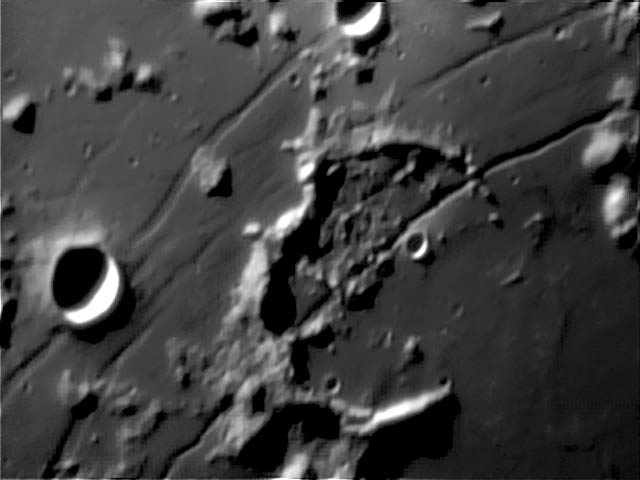Difference between revisions of "April 17, 2005"
| Line 54: | Line 54: | ||
</table> | </table> | ||
<p> </p> | <p> </p> | ||
| − | + | {{wiki/ArticleFooter}} | |
| − | |||
| − | |||
| − | |||
| − | |||
| − | |||
| − | |||
| − | |||
| − | |||
| − | |||
| − | |||
| − | |||
Revision as of 19:20, 1 February 2015
Collapsing Mountain?
Image Credit: Mike Wirths |
|
Collapsing Mountain? Stephen Keenes image of the Hippalus Arcs is one of my all-time favorite lunar photos. The focus of attention of both Stephens previous LPOD image and todays excellent one by Mike Wirths is the set of curved graben that mark where the lunar surface fractured when the weight of the Humorum lavas caused that basin center to subside. But on Mikes image I immediately noticed something that I hadnt seen before. The isolated peak left of center has a lobe of material to the left. It appears that the graben cuts this lobe because a faint trace of the graben edge is visible through the deposit. A more interesting interpretation is that the lobe flowed down from the mountain as a giant landslide. Landslides are rare on the Moon, but common elsewhere, especially on Mars and Jupiters moon Io. Landslides occur most readily where there is a weak layer that breaks apart and collapses gravitationally under stress. Probably most lunar scientists would say that the lobe is simply a residual piece of old lunar terrain surrounded by mare. It probably is, but may not be. This is a good target for hyper-resolution imaging! Technical Details: Related Links: Yesterday's LPOD: Ridgeback Crater Tomorrow's LPOD: The Lunar Crater Wood |
|
Author & Editor: Technical Consultant: Contact Translator: A service of: |
COMMENTS?
Register, Log in, and join in the comments.




